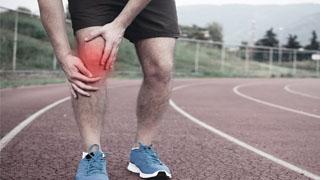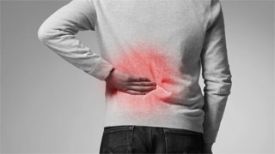
Knee pain is tolerable for most people, but it can greatly affect their daily routine. When knee pain persists for a while, it is best to seek diagnosis and treatment from an orthopedic or rehabilitation department. Knee pain is a common symptom that can be caused by various reasons, and may also be accompanied by pain or discomfort, swelling and redness, and limited mobility. Before seeking medical help, you can relieve knee pain by applying ice, exercising appropriately, and resting.
For people with knee pain, exercise can be seen as a double-edged sword. If done correctly, it can permanently alleviate pain, but if done incorrectly, it may worsen knee symptoms.
Can knee pain be treated with exercise? The good news is that exercising correctly is very effective, and even the NHS is starting to use exercise as a part of treating arthritis, rather than just a pain reliever.
In a study published by the National Institute of Health and Care Excellence, new evidence suggests that regular exercise habits can help alleviate pain in patients with arthritis (including rheumatoid arthritis and psoriatic arthritis). According to NHS data, there are over 10 million arthritis patients in the UK, and for these people, this news is truly remarkable!
Of course, arthritis can affect other joints such as the knees, hips, and hands, but on average, 24000 people search for knee arthritis exercise online every month, so this article mainly focuses on the exercise of knee arthritis patients.
Which department should I go to for knee pain?
When knee pain persists for a while, it is best to seek diagnosis and treatment from an orthopedic or rehabilitation department. If medication is needed, over-the-counter drugs such as ibuprofen or acetaminophen may help alleviate knee pain and inflammation.
Can knee pain be relieved through exercise?
Knee arthritis is a type of osteoarthritis and the most common type in the UK, which can lead to arthritis and stiffness. Nice's research came from here, so can exercise treat knee arthritis? The answer is undoubtedly yes!
Exercise, especially muscle strength training, should be included in the first-line treatment for pain, disability, and knee arthritis.
Knee arthritis can be relieved of pain and symptoms through some forms of exercise. But you need to know that "strengthening muscles and improving balance have a great impact on the transmission of joint strength, can improve pain, and enhance mobility and balance
For example, single leg balancing (unilateral) exercises may enhance lower limb muscle strength and range of joint movement. This means that you can better distribute the force through the ground and calves to your knees. Therefore, the calf muscles will be stronger and reduce the burden on the knee joints. Let the muscles and joints around the bones share some weight.
If knee arthritis is caused by obesity, the benefits of exercise will be even greater. If allowed by a doctor, weight loss can be used to reduce pain and mobility issues.
The benefits of relieving knee pain through exercise
To be sure, all of the following benefits may be realized
1. Enhance Strength
2. Enhance endurance
3. Enhance balance
4. Enhance flexibility
5. The range of joint movement will change significantly
6. Relieve pain
7. Psychological health benefits
8. Enhance activity intensity
Intervening in the treatment of arthritis and knee arthritis through exercise can reduce the need for injections or surgical procedures. Similarly, if surgery is considered for arthritis or knee arthritis, exercising beforehand to make the body stronger is the key to helping with recovery.
Knee passage, the most effective exercise treatment for arthritis
The principle is divided into three parts: strengthening the calf muscles, improving joint range of motion, and reducing pain.
The best exercises for knee arthritis usually include the following:
1. Use the parasympathetic and quadriceps muscles to bend and straighten the knee
2. Promote the range of motion of the knee joint
3. Improve the endurance of pelvic muscles, for example: curved knee bridge
4. Increase calf muscle endurance
Bending and straightening knees can be separated into two separate movements and performed on a chair or bed. Lie down forward to stretch your leg muscles, or sit on your hips to stretch your quadriceps. If you feel pain at the beginning, you can place a towel under your knee as a support.
How to relieve knee pain?
5 home exercises
Next, try combining bending and stretching movements in compound movements, such as slight lunges or slight wall squats. Recommend the following exercises:
Knee pain relief 1. Straight knee and leg lift (sitting position)
Sit in a chair, straighten your back, straighten and lift one leg. Maintain the movement, slowly count to 10, and then slowly lower your leg. Repeat the movement 10 times for each leg.
Knee pain relief 2 Ascend the stairs
Step up the stairs with your right foot, lift your left foot, then walk down the stairs with your right foot, and switch to your left foot. If the center of gravity is unstable, you can grab onto the railing. Repeat the movement with both legs in turn until they can no longer do it. Take a minute off and repeat two more cycles. As you gradually progress, you can step onto higher steps or take two steps at once.
Knee pain relief 3. Get up/sit down
Sit on a chair, stand up without relying on your hands, and then sit down. Ensure that each action is done slowly and solidly. Repeat the action of standing and sitting until you can no longer do it. After resting for one minute, repeat two cycles. If the chair is too low, you can add a cushion on the chair until you no longer need it before removing it.
Knee pain relief 4. Towel extension
Sit on the floor, sofa, or bed, with legs straight forward. Place a rolled up towel under one knee and push it down as if you are straightening your knee. Pull your toes and feet in your own direction so that you can feel the extension of your calf muscles. The heel will naturally lift off the floor, hold for five seconds, and then relax for five seconds. The same action weighs 3. Sit/stand again ten times, then switch to the other leg.
Knee pain relief 5. Cross legs
Sit at the edge of a table, chair, or bed and cross your ankles. Push your front legs back and back legs forward until you feel your thigh muscles become tight. Maintain this position for as long as possible and then relax. Rest for one minute, then repeat twice
How often is it appropriate to exercise for knee pain?
In the early stages, the focus is on endurance and painless exercise. Avoid pain shifting to the moderate to severe end of the pain scale during or after exercise. Most people can practice three sets of exercises per day, 10 times per set, and 3 times per week. But remember, the frequency of exercise varies from person to person! It depends on your level of pain and daily needs.
What are the sports taboos for knee pain?
For people who have been suffering from knee arthritis pain for a long time, you may be eager to try these exercises, but you should know that there is ultimately no quick way to get rid of the pain. Just like what we have been doing, we need to listen to our body's voice. Below, we will tell you when to relax and what to do.
▶ If moderate to severe pain occurs during activity, reduce the number of movements or decrease the amplitude of movements to alleviate the pain.
▶ If moderate to severe pain occurs again after exercise and the next morning, please make further adjustments by reducing the number of repetitions or lowering the amplitude of movements to alleviate the pain
▶ If you feel severe pain during exercise, please stop exercising on the same day and try again the next day. If it is still severe, please stop exercising until the pain subsides and becomes mild.
▶ If any form of activity continues to cause pain, please consult a musculoskeletal specialist to ensure that you need more specific advice.
Suggestion: People with knee arthritis are unlikely to need to completely avoid exercise, as exercise can always be changed and muscle activity can often prevent pain. Therefore, even low-level isometric exercises, such as micro lunges, can be combined with other treatment methods, such as injections if the pain is severely limited.


